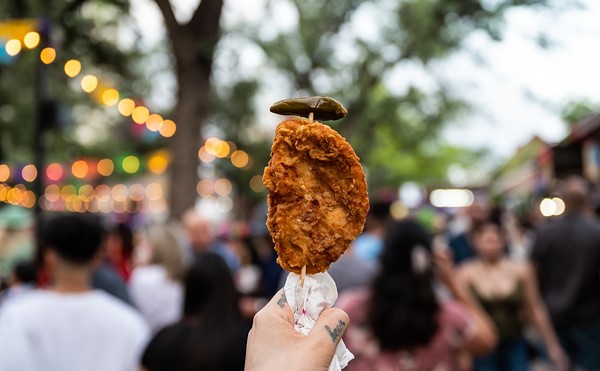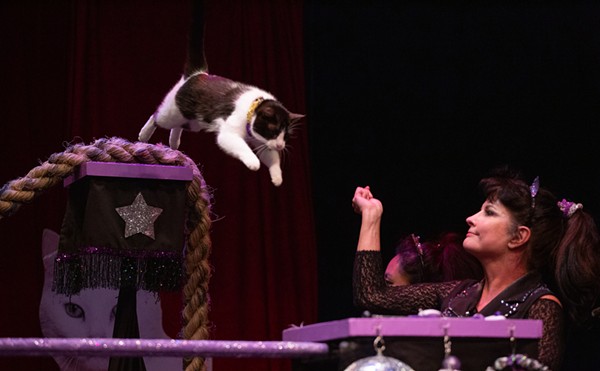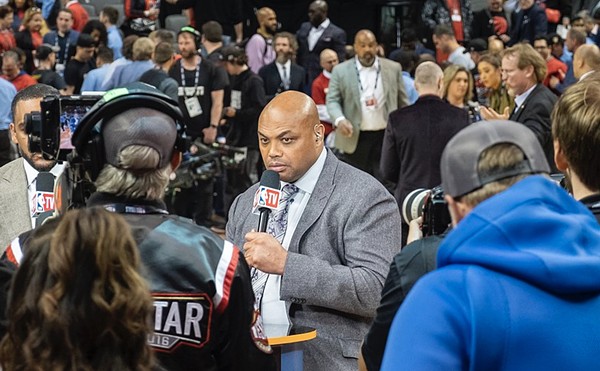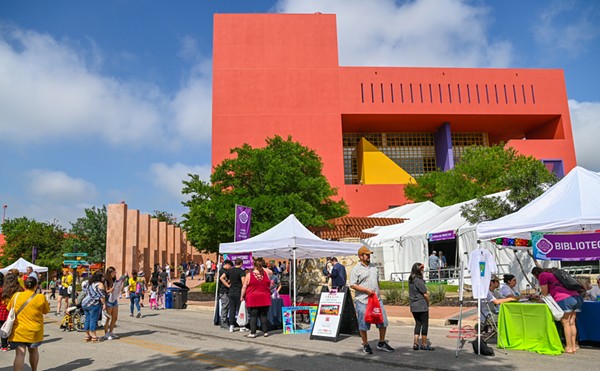That provocative title moved Kathy Armstrong-Gillis, the volunteer curator of the art show and sale, whose proceeds will benefit Planned Parenthood, to invite 21 local artists to riff on the theme. "We wanted people to realize that there's a slipping away, an erosion of women's rights," says Armstrong-Gillis. She began work on the project a year ago after a sobering lobbying trip to the state legislature on behalf of reproductive rights. "Instead of getting something good to happen (over-the-counter availability of the morning-after pill), we ended up working to keep something bad from happening," recalls Armstrong-Gillis of the session that resulted in greater restrictions on access to abortion in Texas.
| MORE THAN ABSTINENCE 5 - 8 p.m. Saturday, February 14 $25 individual/$40 couple Joan Grona Gallery 112 Blue Star Tickets: 736-2244, ext. 318 |
Belying the findings of the new NPR/Kaiser/Kennedy School poll, federal funding for abstinence-only education has been in place since 1981, and was increased dramatically in 1996 as part of the Republican-led welfare reform effort. Since then, Congress has continued to tie abstinence-only funding to other social service initiatives, such as maternal and child health block grants. And while the proposed White House budget includes cuts across the board in social services and family planning programs, President Bush has called for increased funding for abstinence-only education.
"This little pet project of the right wing is unscathed by `these budget cuts`," fumes Planned Parenthood President and CEO Jeffrey Hons. "This President is continuing to support this without any scientific evidence that this is successful."
A 1994 study by researcher Douglas Kirby found that the few sex ed programs that do affect teenage sexual behavior promote an abstinence-plus message: "delay having sex, but, if you have sex, always use a condom." Successful programs combine this message with techniques for resisting peer pressure.
But Hons worries that the current administration's blind promotion of abstinence-only curricula is taking its toll on public perception. "There's starting to be a sense among a growing number of people that this is what sex ed is," Hons argues.
That's why, he says, now is the time to promote a more-than-abstinence message and, he notes, "Time and again it's been proven that art is a very powerful way to communicate."
Artist Ethel Shipton, whose encased vinyl arrows reflect the conflicting messages teens receive from hyper-sexualized media programming, church, and family, recalls sex ed in public school in her hometown, Laredo. "Yeah, I saw the film about your period," she laughs. "They put newspapers on all the windows of the cafeteria. You didn't know what you were going in to.
"I don't think abstinence is reality," Shipton adds, "I just want there to be a lot of choices."
Maria Elena Botello Mogas, whose stark two-tone monogram illustrates the black-and-white terms in which the sexual education and reproductive rights battles are fought, agrees. "I thought it was the most insightful title `for the show`," says Mogas. "It requires more than abstinence," but, she adds, "`abstinence` doesn't have to be negative; it can be a positive choice."
In fact, according to the NPR/Kaiser/Kennedy School poll, the vast majority of Americans think that abstinence is an unrealistic expectation - a belief supported by the finding that over half of U.S. teenagers have had sex at least once by age 18 - but 63 percent of those surveyed still agreed that abstinence outside of marriage "is the expected standard for all school-age children."
These conflicting attitudes and feelings are mirrored in the artworks in the show. Lucia LaVilla Havelin's provocative needlepoint and mixed-media work portrays an expectant girl in a school uniform, surrounded by a ring of birth control pills. Anita Valencia continues her Recycled Plus series, with birth control pills and condoms barely discernible through a thick layer of iridescent pigment. The entertaining and barbed shadow boxes by Bernice Williams make the subconscious mixed messages overt, with mini magazine covers touting romance, and suggestive directional signs.
The show includes work by Regis Shephard, Michael Nye, and Suzanne Paquette, among others. Armstrong-Gillis also selected pieces by sculptors Ken Little and Danville Chadbourne. She says that Planned Parenthood's Annual Gifts Manager, Susan Albert, who is an artist, allowed her to be selective about the artists and the works. "It's a very high-class event," says Armstrong-Gillis.
Food is being provided by Beto's Latin Grill, and a grand floral entrance will be created by Veronica Prida and Ronald Kolodzie. Raffle items include a custom raincoat and umbrella made from Planned Parenthood bags from around the country, and a basket of condom-shaped cookies by Christine McRae of Lily's Cookies. "So we'll have total protection," laughs Albert.
Planned Parenthood encourages those who want to make a cinematic entrance unimpeded by check-writing or wallet-fumbling to reserve tickets ahead of time. •















